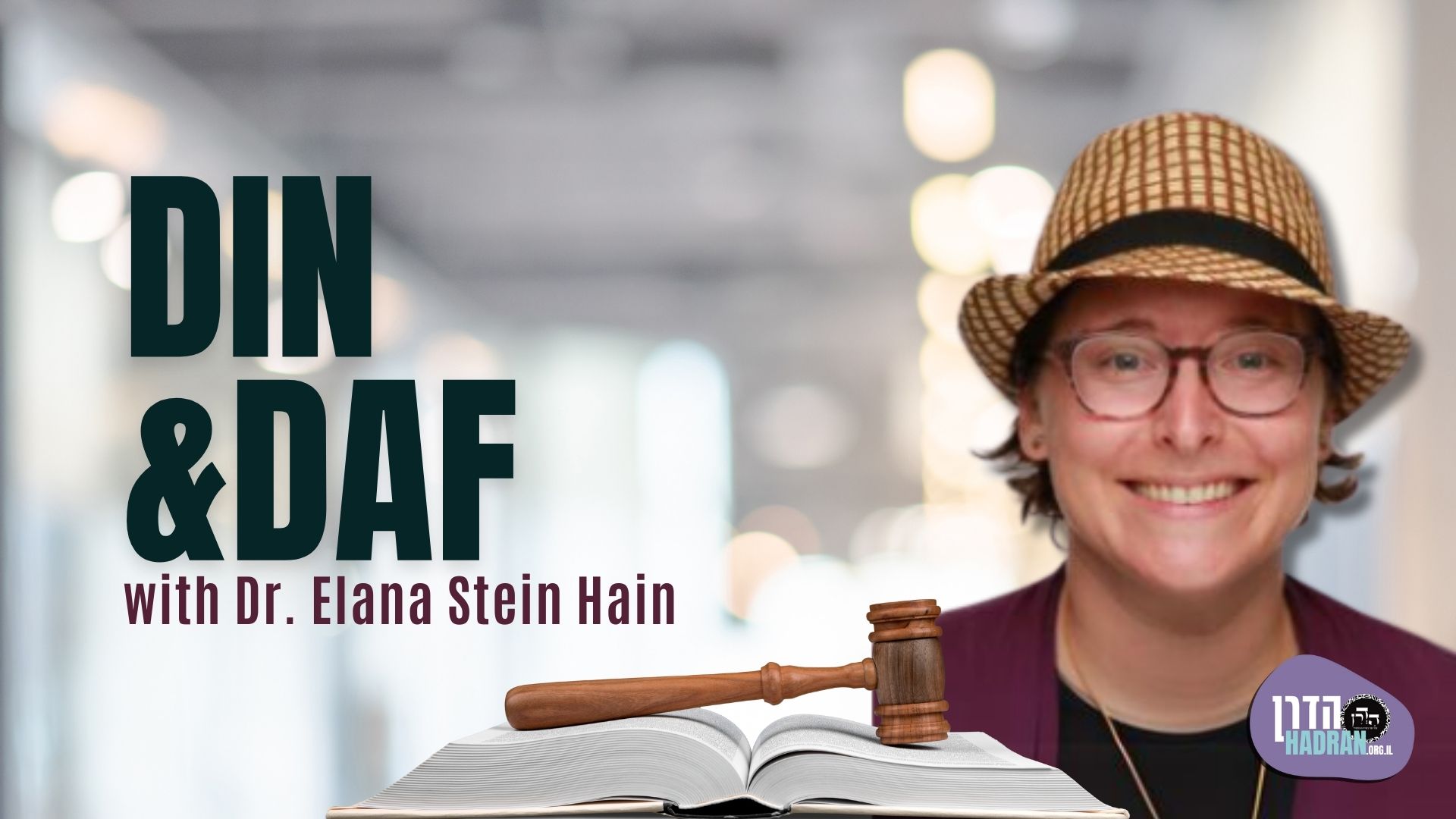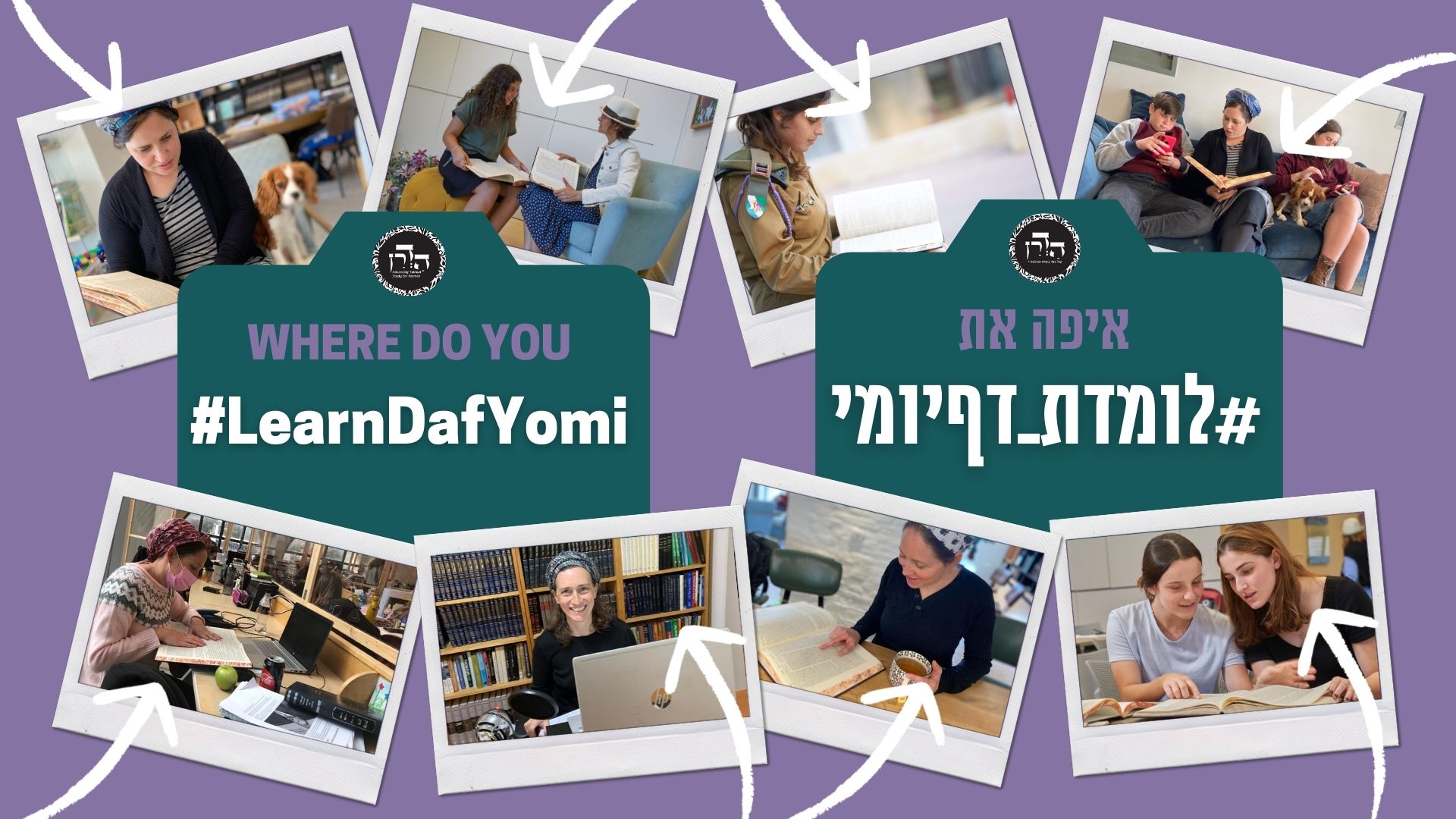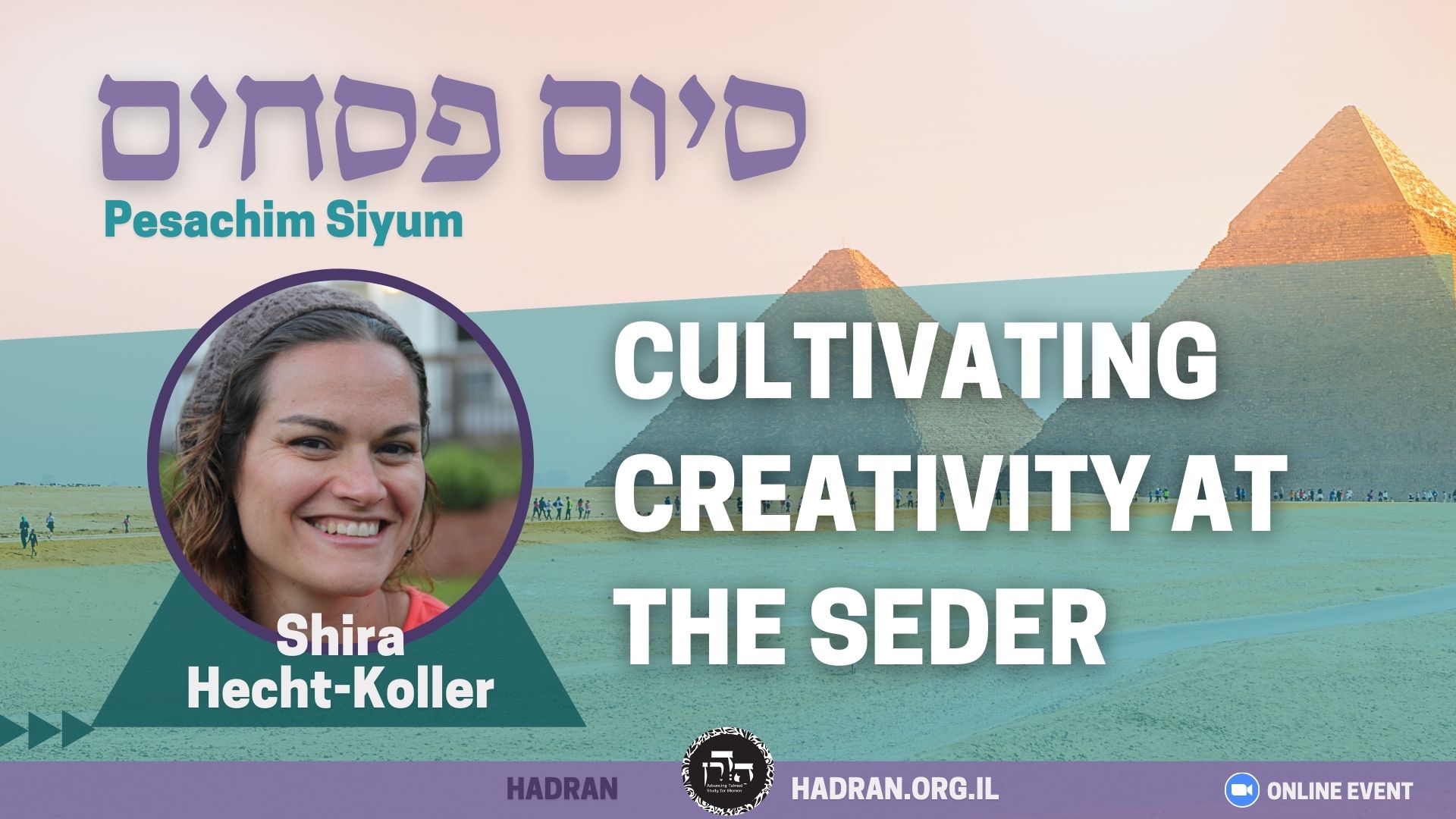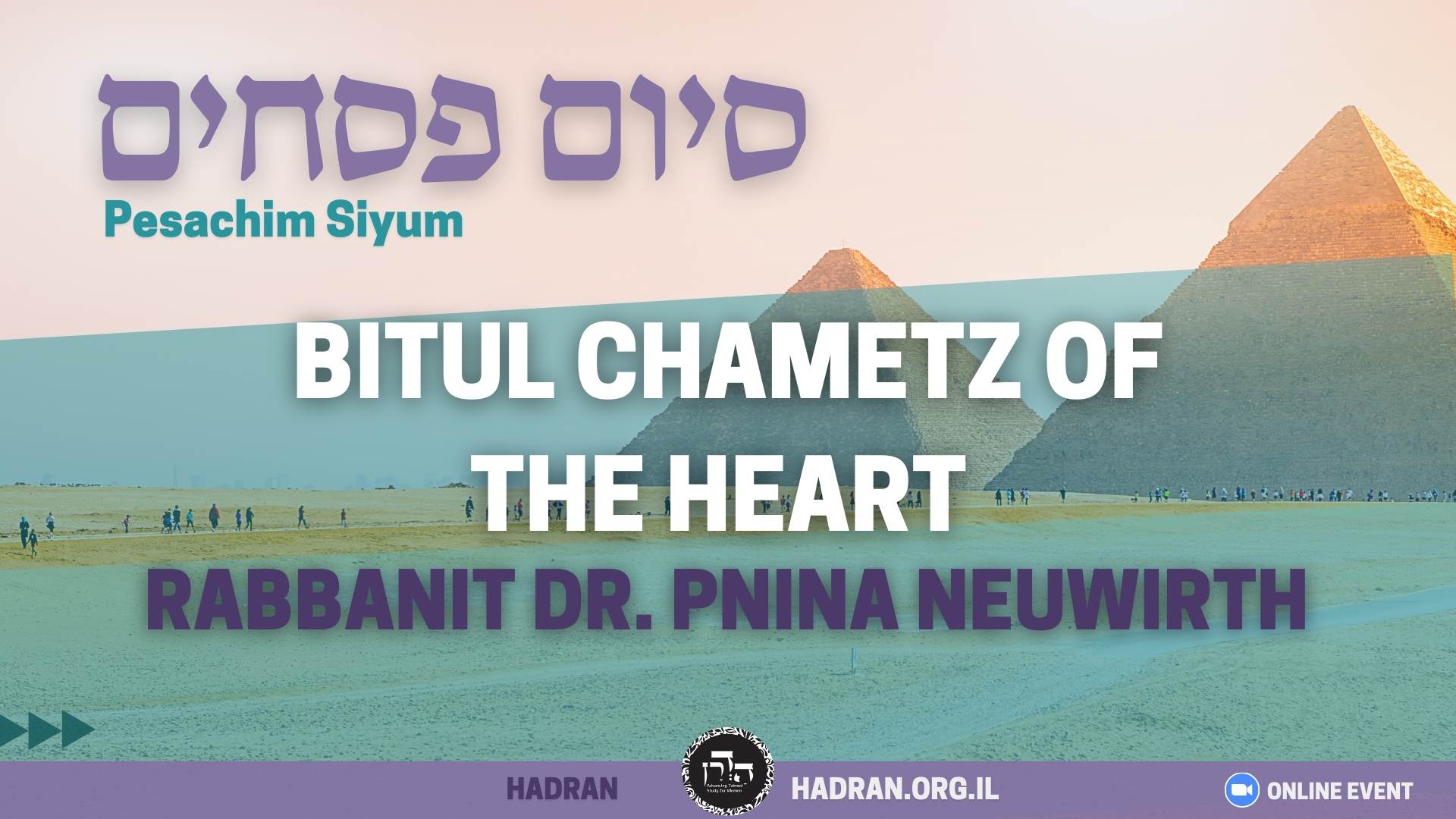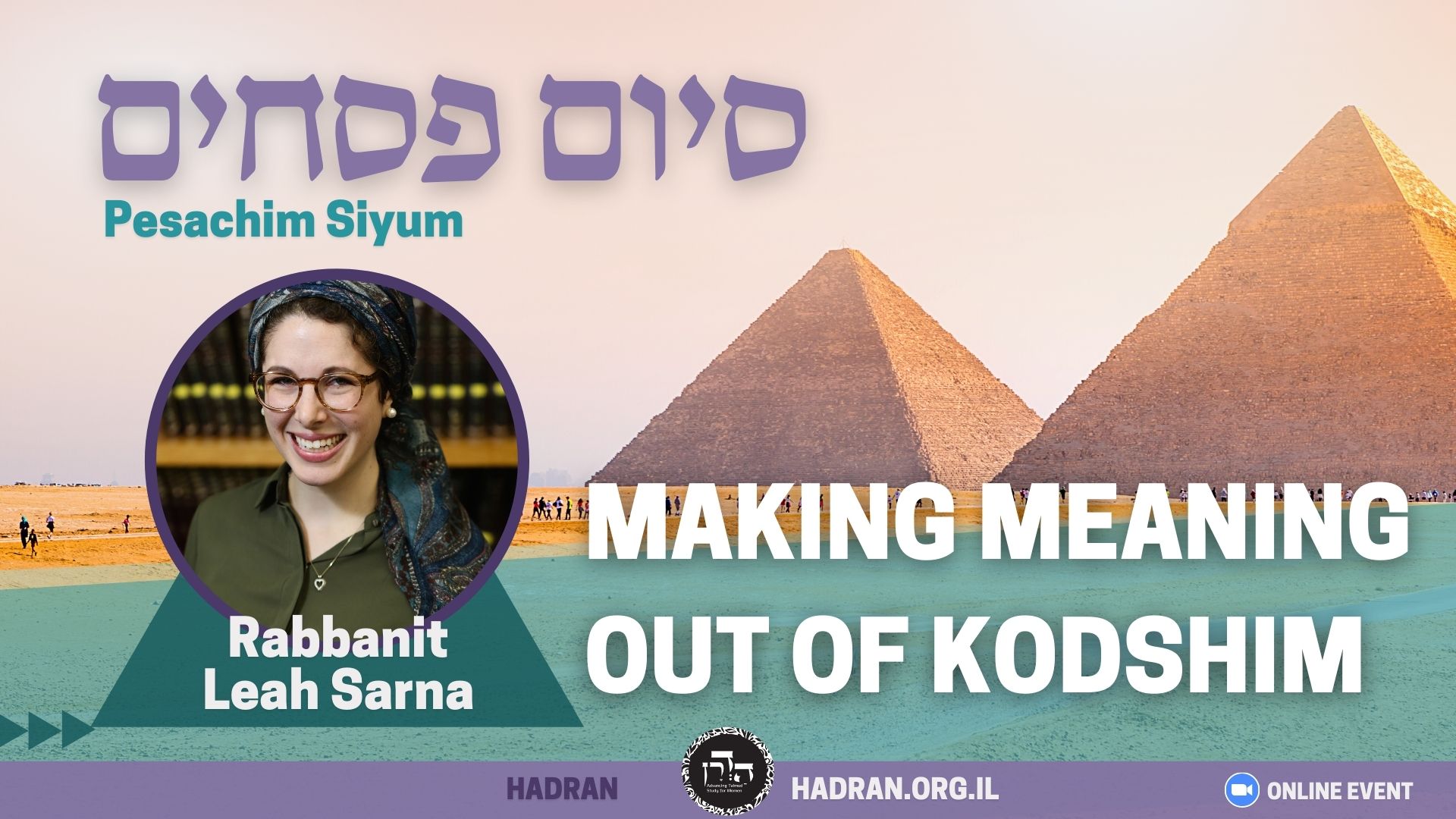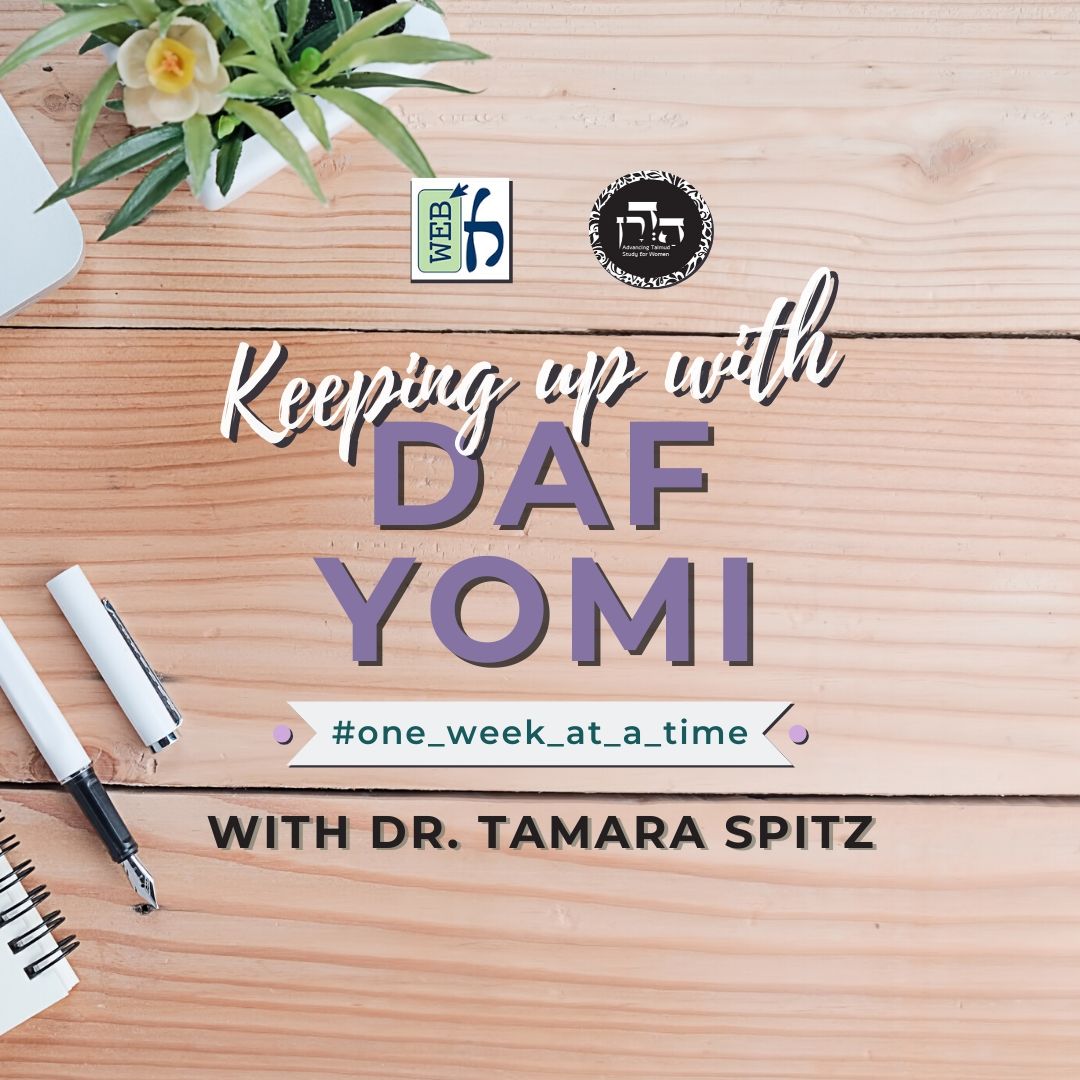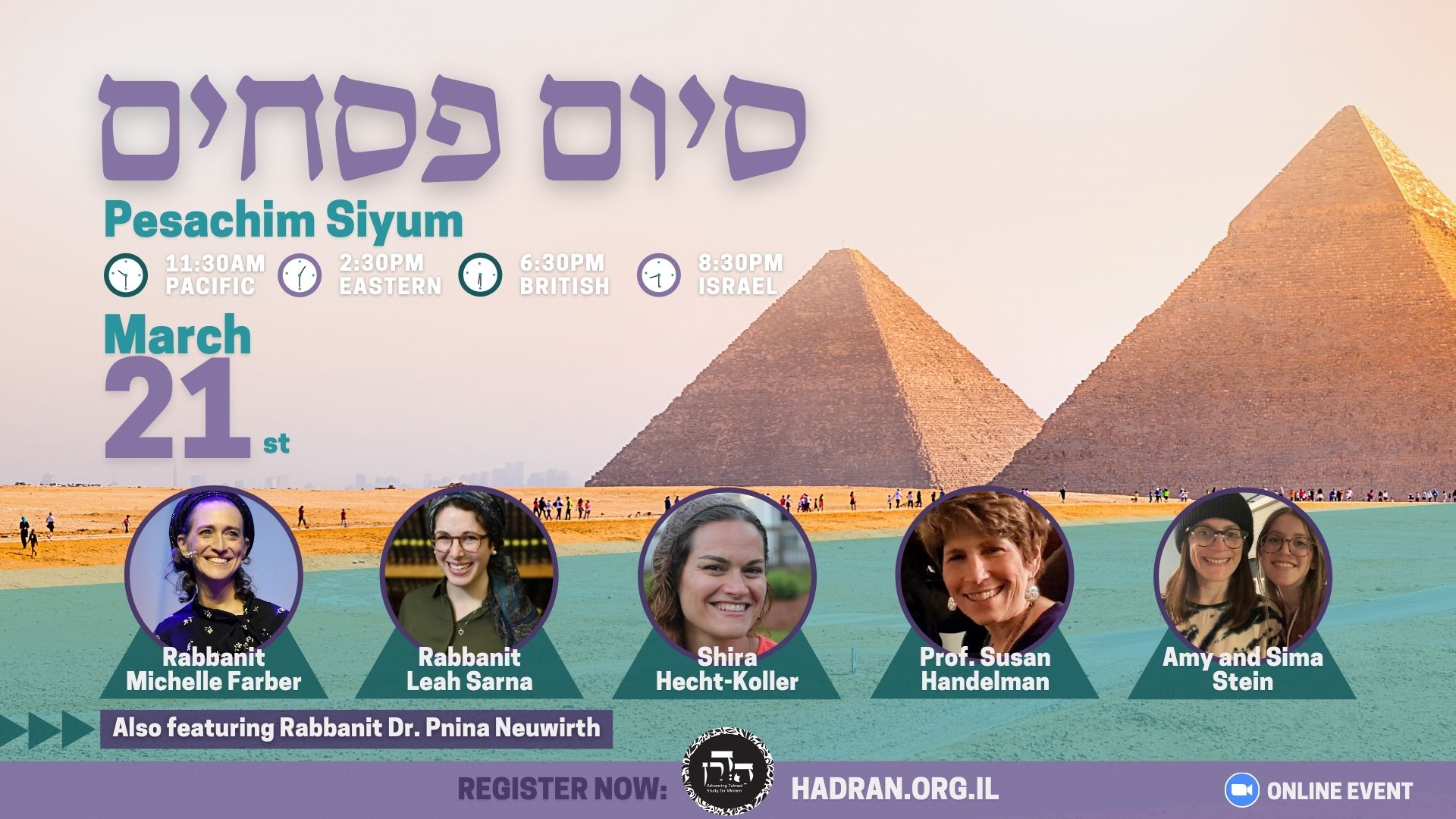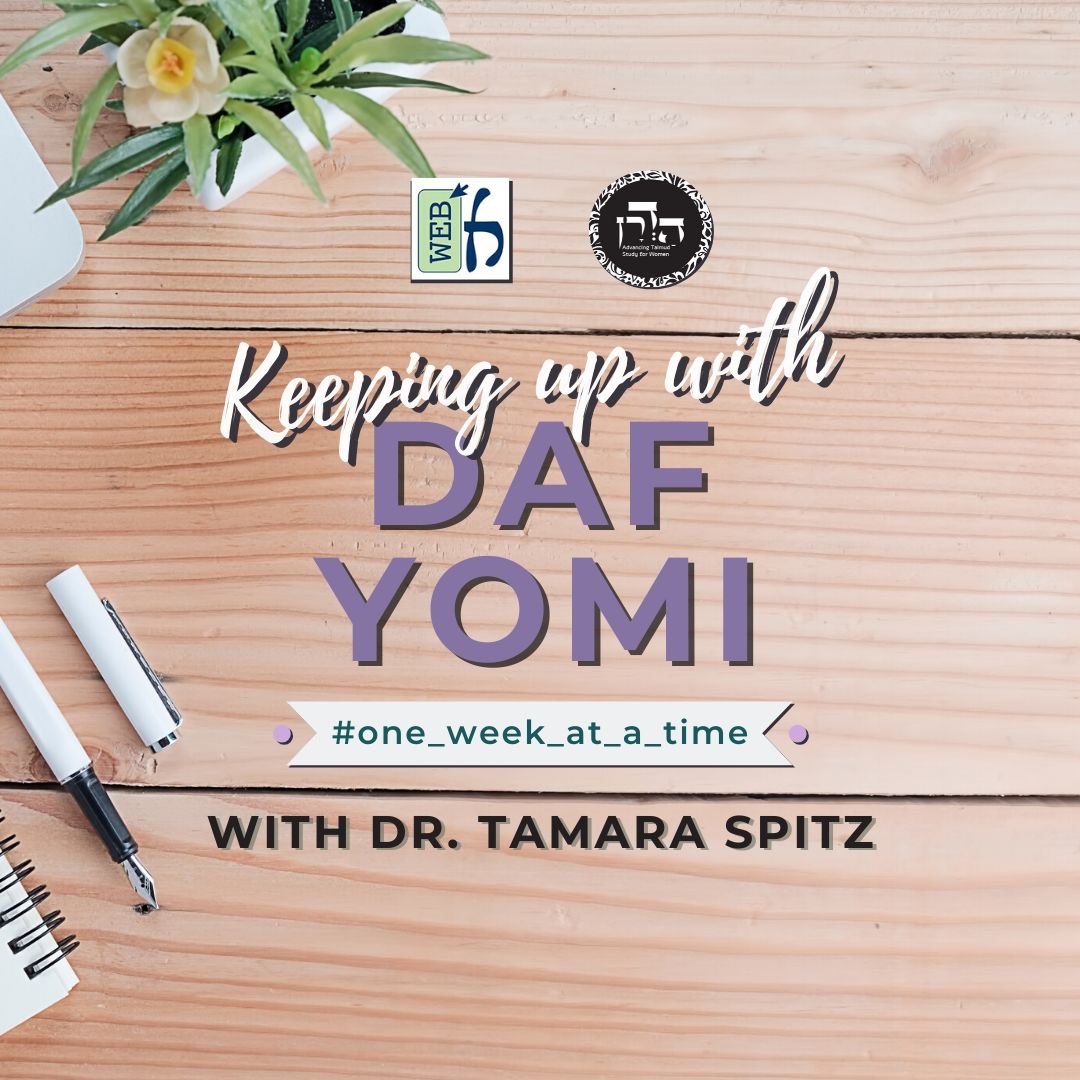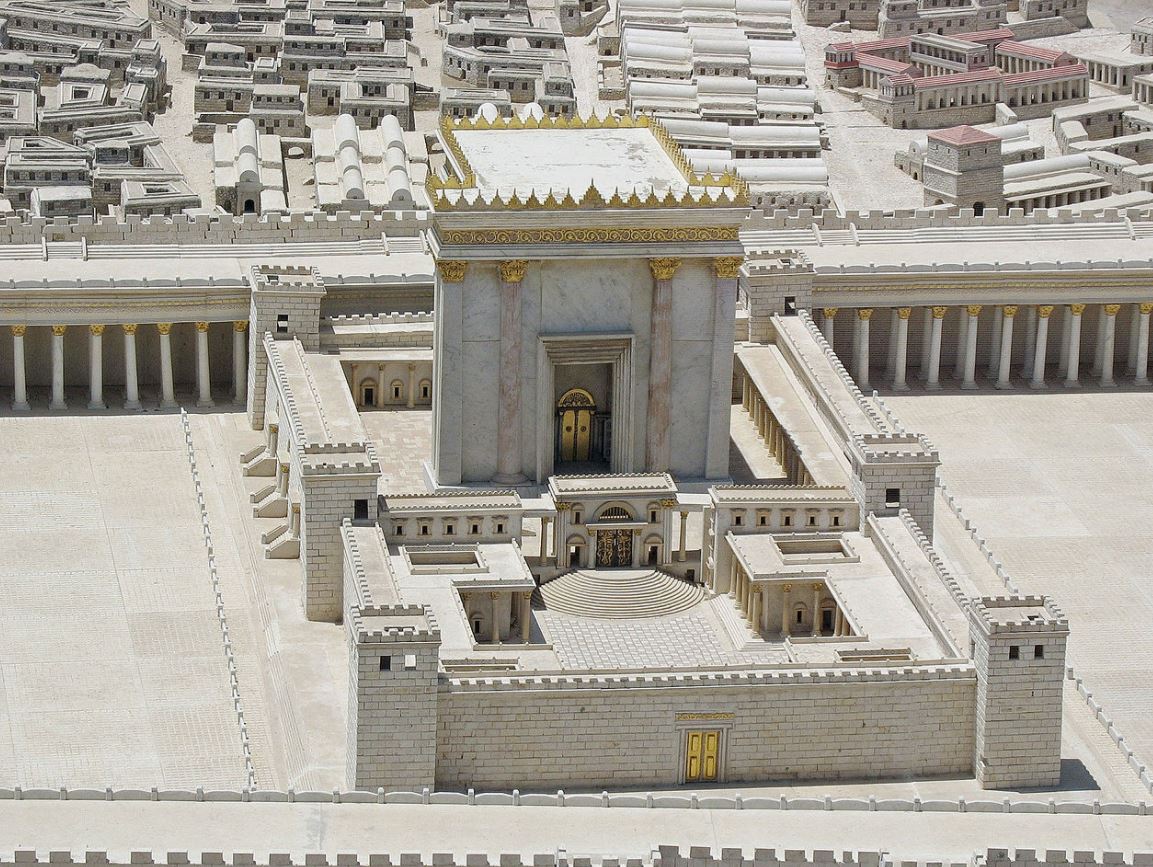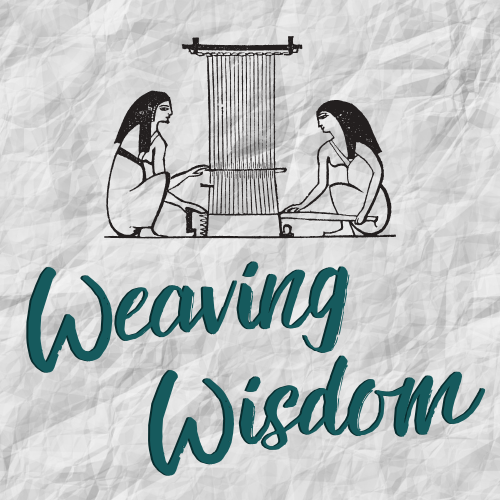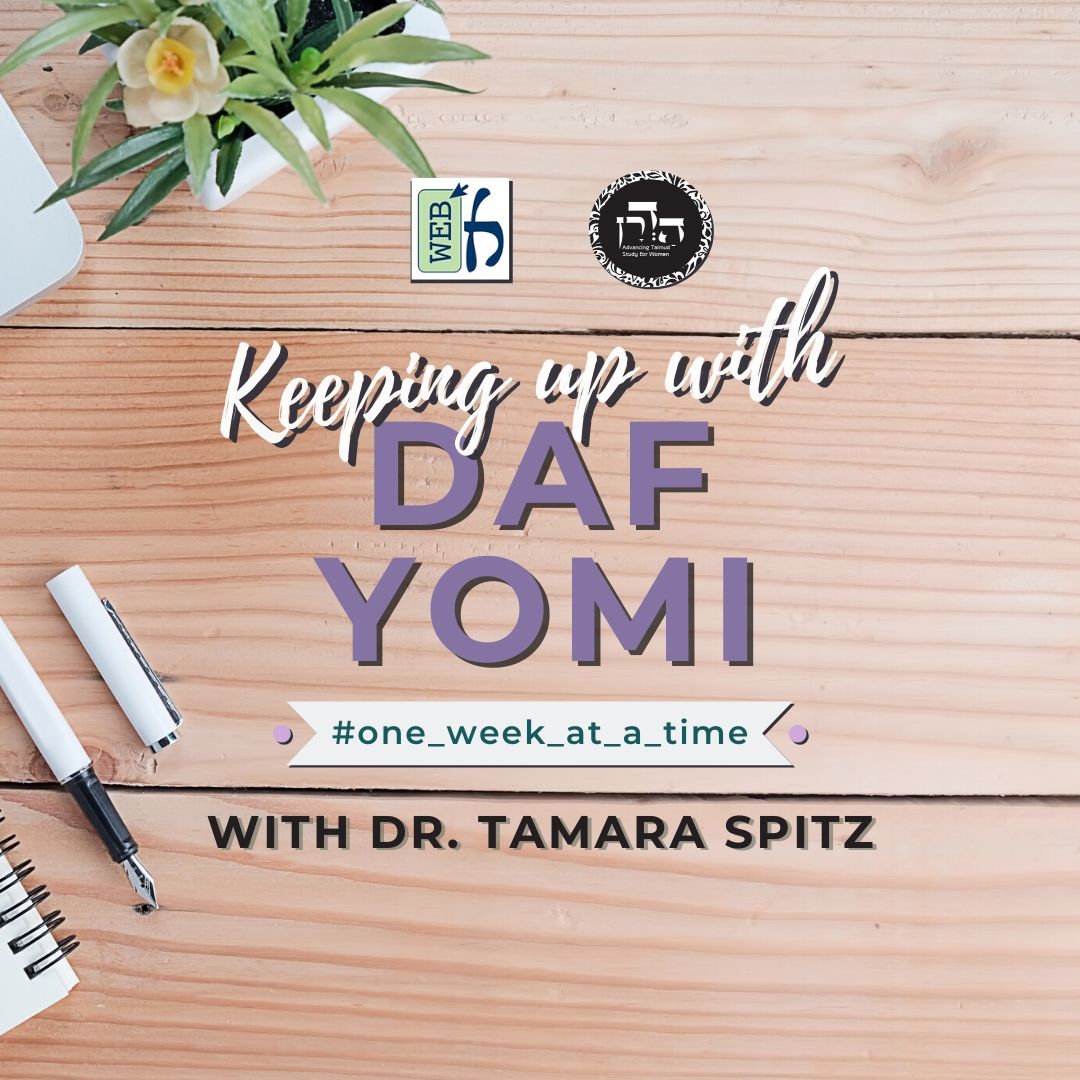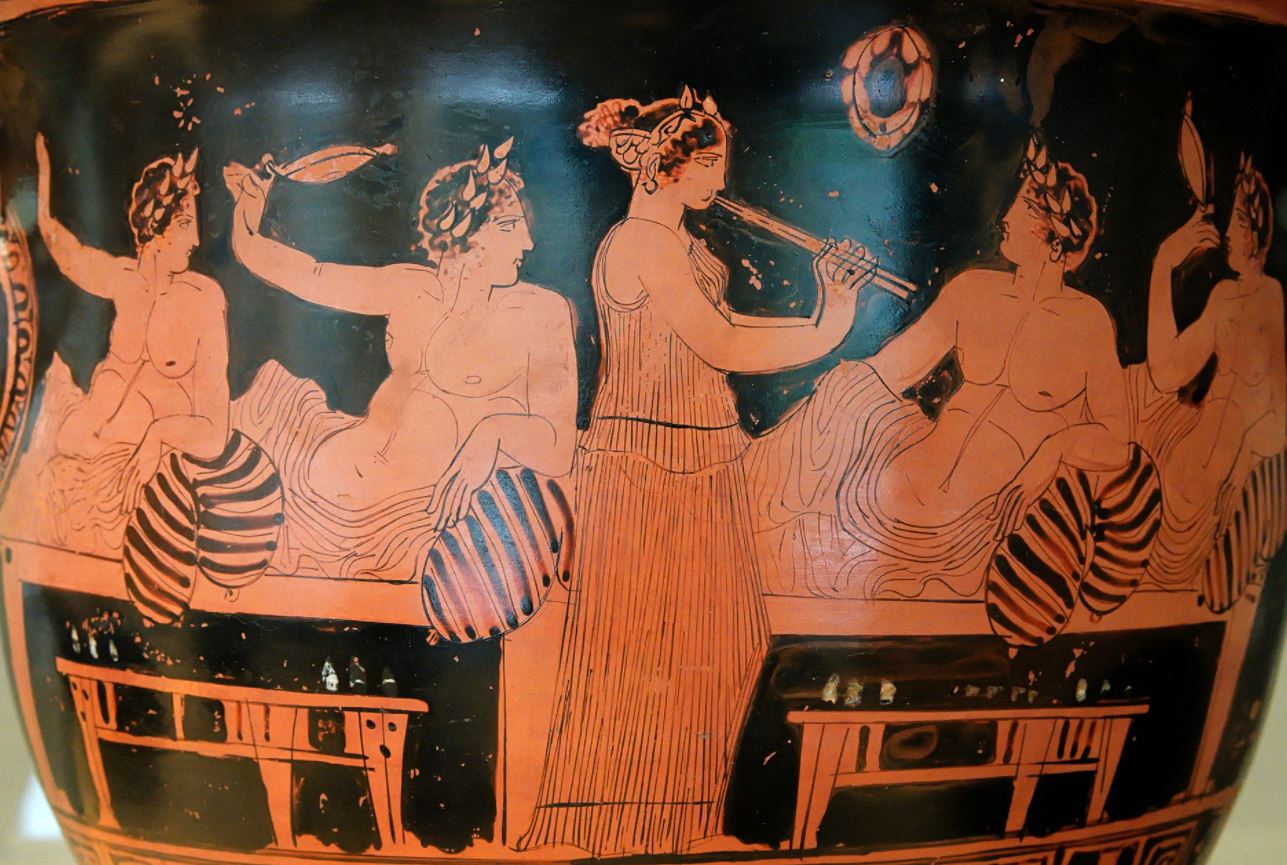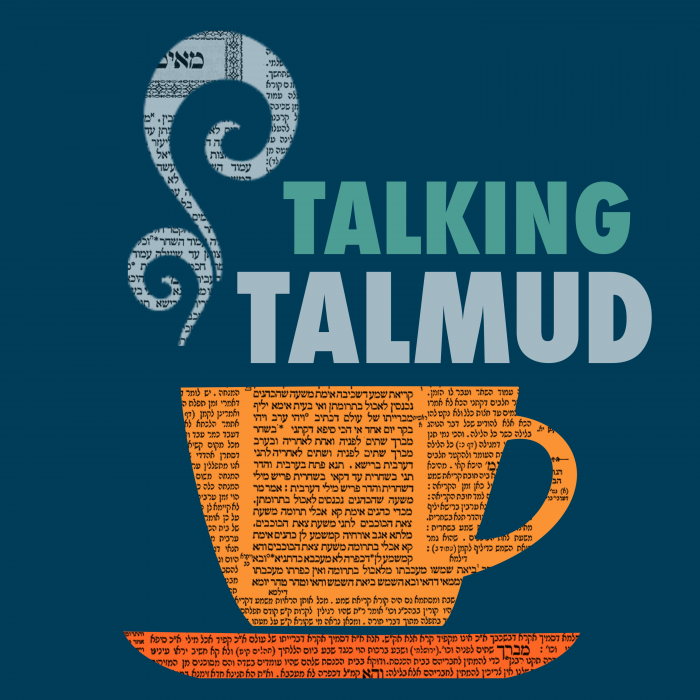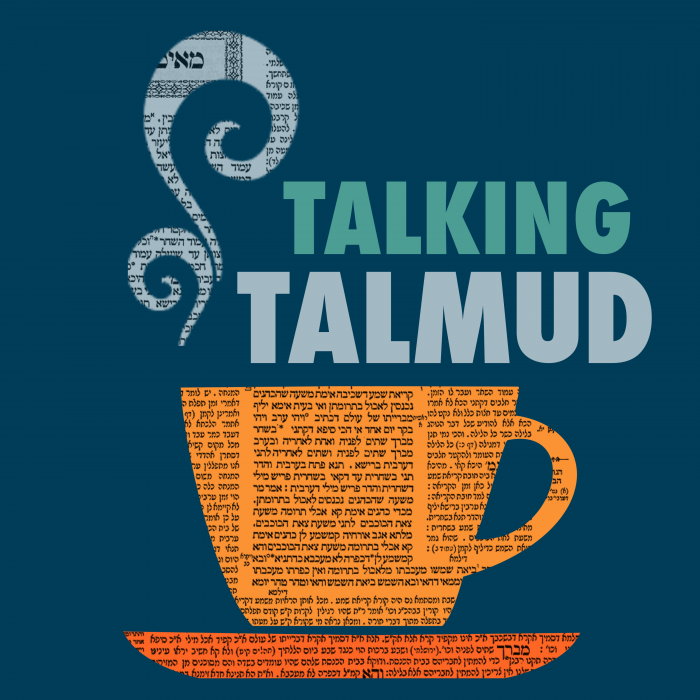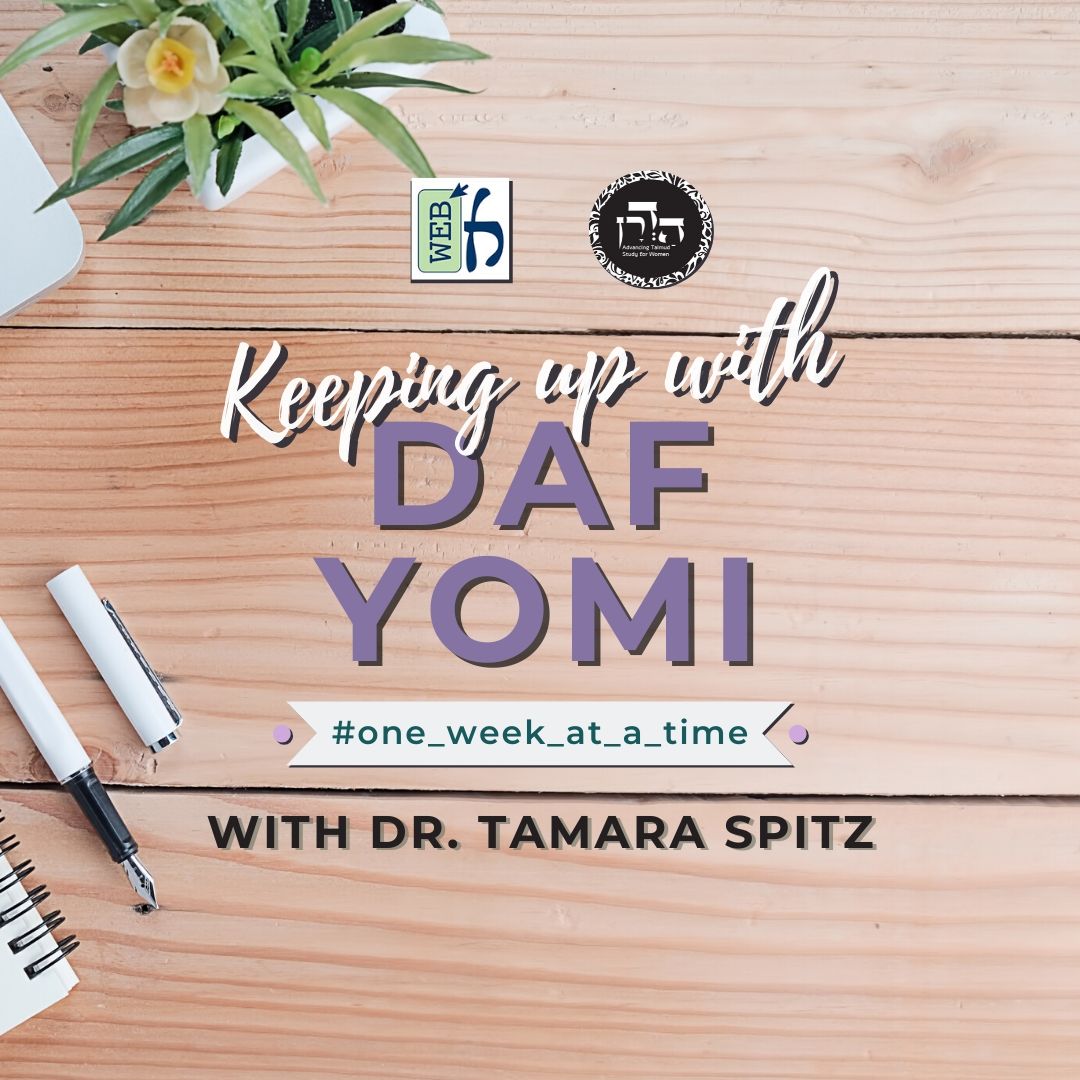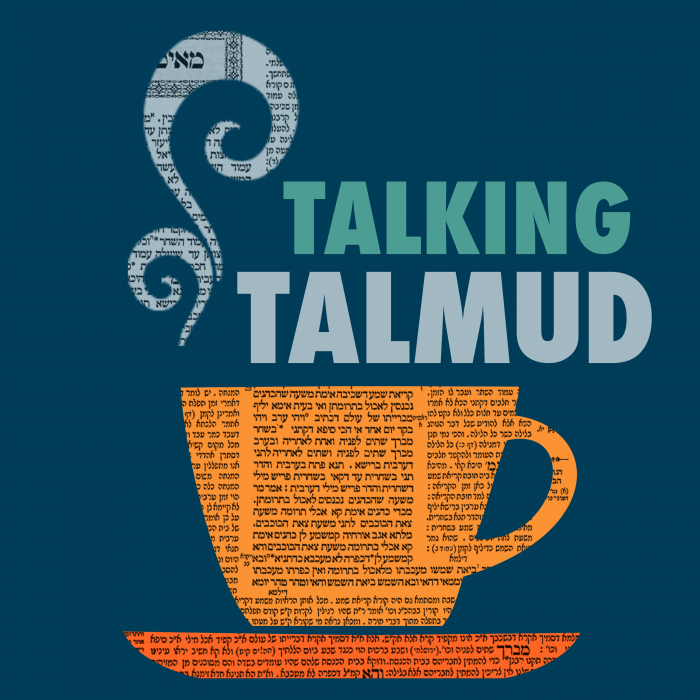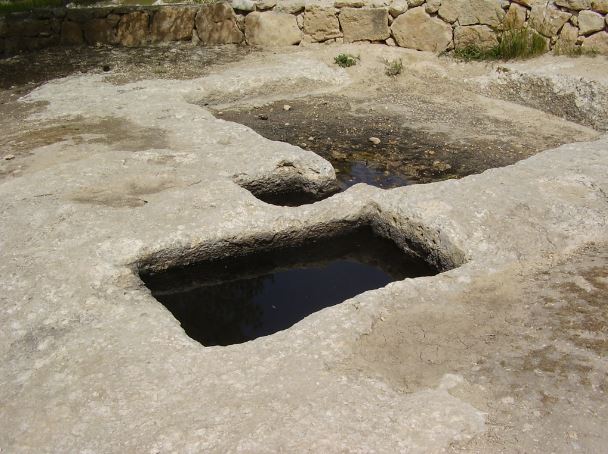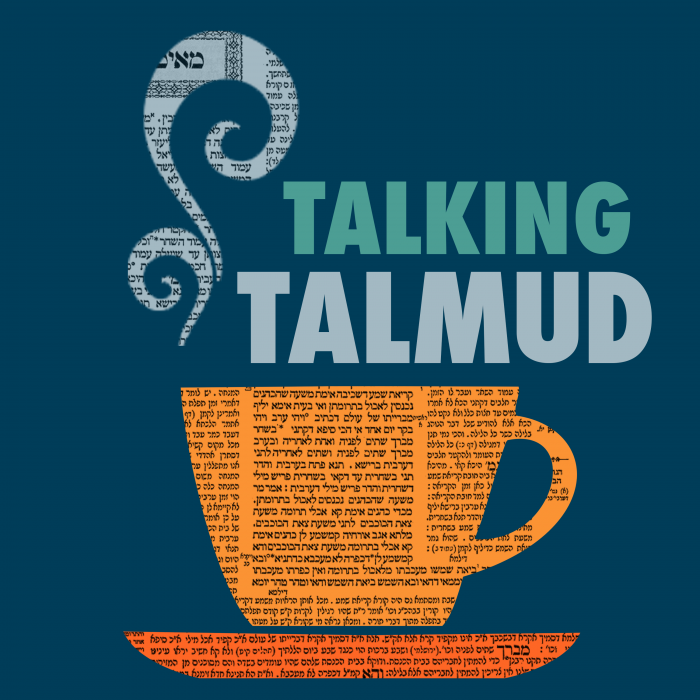Pesachim 48
״מִן הַמָּאתַיִם״ — מִמּוֹתַר שְׁתֵּי מֵאוֹת שֶׁנִּשְׁתַּיְּירוּ בַּבּוֹר. מִכָּאן לְעׇרְלָה שֶׁבְּטֵילָה בְּמָאתַיִם.
The phrase: Out of two hundred, is expounded with regard to wine brought as a libation: From the remaining two hundred portions that remain in the vat. This is referring to a case where wine prohibited as produce grown during a tree or vine’s first three years [orla] is mixed with permitted wine. The halakha is that this wine mixture may be brought as a libation only if there is two hundred times more permitted wine than prohibited wine. From here it is derived that orla is nullified in a mixture of two hundred.
״מִמַּשְׁקֵה יִשְׂרָאֵל״ — מִן הַמּוּתָּר לְיִשְׂרָאֵל. מִכָּאן אָמְרוּ: אֵין מְבִיאִין נְסָכִין מִן הַטֶּבֶל.
The phrase: From the well-watered pastures of Israel, means that sacrifices may be offered only from that which is permitted to Israel. From here, the Sages stated: One may not offer libations from untithed produce [tevel], since Jews are prohibited from eating tevel.
יָכוֹל לֹא יָבִיא מִן הַמּוּקְצֶה. אָמַרְתָּ: מָה טֶבֶל מְיוּחָד שֶׁאִיסּוּר גּוּפוֹ גָּרַם לוֹ — אַף כֹּל שֶׁאִיסּוּר גּוּפוֹ גָּרַם לוֹ. יָצָא מוּקְצֶה שֶׁאֵין אִיסּוּר גּוּפוֹ גָּרַם לוֹ, אֶלָּא אִיסּוּר דָּבָר אַחֵר גָּרַם לוֹ. וְאִי אָמְרַתְּ אִיסּוּר מוּקְצֶה דְּאוֹרָיְיתָא, מָה לִי אִיסּוּר גּוּפוֹ מָה לִי אִיסּוּר דָּבָר אַחֵר?
I might have thought that one may not offer an animal that is set-aside on Shabbat or during a Festival; therefore, you have said: Just as tevel is unique in that its inherent prohibition caused it to be prohibited for Jews to eat, so too, anything whose inherent prohibition caused it to be prohibited for Jews to eat is invalid as an offering. This excludes an animal that has been set aside, which does not have an inherent prohibition that caused it to be prohibited for eating; rather, a different prohibition, i.e., the prohibition of utilizing set-aside objects on Shabbat, caused it to be prohibited for eating. And if you say the prohibition of utilizing set-aside material is by Torah law, what difference is there to me if a food is inherently prohibited; and what difference is there to me if it is prohibited due to a different prohibition? If there is a distinction between these prohibitions, it must be that the prohibition of utilizing set-aside material is by rabbinic law, and therefore, like many other rabbinic decrees, it does not apply in the Temple.
וְעוֹד, הָא אַתְּ הוּא דְּאָמְרַתְּ: חִילּוּק מְלָאכוֹת לְשַׁבָּת, וְאֵין חִילּוּק מְלָאכוֹת לְיוֹם טוֹב.
And furthermore, Abaye said to Rabba: It is possible to challenge your interpretation of the baraita from a different angle. Wasn’t it you who said, as cited in tractate Makkot, that there is division of labors with regard to Shabbat, and therefore one is required to bring two sin-offerings if he performed two prohibited labors of different primary categories in one lapse of awareness, or if he performed a prohibited labor twice, during separate lapses of awareness; however, there is no division of labors with regard to a Festival, and therefore one is not punished with multiple floggings for performing multiple prohibited labors? Consequently, how could one be liable for multiple floggings for the prohibition of utilizing set-aside materials and for cooking the sciatic nerve on a Festival?
אֶלָּא אַפֵּיק הַבְעָרָה, וְעַיֵּיל עֲצֵי אֲשֵׁירָה. וְאַזְהָרָה מֵהָכָא, ״וְלֹא יִדְבַּק בְּיָדְךָ מְאוּמָה מִן הַחֵרֶם״.
Rather, in order to make this baraita consistent with Rabba’s opinion, remove the prohibition of kindling a fire and add in its place the prohibition of using the wood of a tree designated for idolatry [asheira]. And the warning, i.e., the source of the negative commandment associated with using this wood, is derived from here, a verse that relates to an idolatrous city that is burned: “Nothing from the spoil shall cling to your hand” (Deuteronomy 13:18).
אֲמַר לֵיהּ רַב אַחָא בְּרֵיהּ דְּרָבָא לְאַבָּיֵי: וְנִלְקֵי נָמֵי מִשּׁוּם ״וְלֹא תָבִיא תוֹעֵבָה אֶל בֵּיתֶךָ״.
Rav Aḥa, son of Rava, said to Abaye: If this case is referring to using wood from an asheira, one should also be flogged due to having transgressed the prohibition of: “You shall not bring an abominable thing into your home” (Deuteronomy 7:26). However, this would add an extra negative commandment to the list enumerated in the baraita.
אֶלָּא: אַפֵּיק הַבְעָרָה, וְעַיֵּיל עֲצֵי הֶקְדֵּשׁ. וְאַזְהָרָה מֵהָכָא, ״וַאֲשֵׁרֵיהֶם תִּשְׂרְפוּן בָּאֵשׁ … לֹא תַעֲשׂוּן כֵּן לַה׳ אֱלֹהֵיכֶם״.
Rather, remove the prohibition of kindling a fire and add in its place the prohibition of burning consecrated wood. And the warning, i.e., the source of this negative command, is from here: “And you shall burn their asheira trees with fire…you shall not do this to the Lord your God” (Deuteronomy 12:3–4). Therefore, one who burns a consecrated item in a destructive manner is punished with lashes. In conclusion, no adequate proof can be adduced from the baraita to reject Rabba’s opinion.
אָמַר רָמֵי בַּר חָמָא: הָא דְּרַב חִסְדָּא וְרַבָּה — מַחֲלוֹקֶת דְּרַבִּי אֱלִיעֶזֶר וְרַבִּי יְהוֹשֻׁעַ הִיא. דְּרַבִּי אֱלִיעֶזֶר סָבַר: אָמְרִינַן ״הוֹאִיל״. וְרַבִּי יְהוֹשֻׁעַ סָבַר: לָא אָמְרִינַן ״הוֹאִיל״.
Rami bar Ḥama said: This dispute between Rav Ḥisda and Rabba with regard to the principle: Since, etc., is a matter of dispute between Rabbi Eliezer and Rabbi Yehoshua in the mishna. As, Rabbi Eliezer, who says that ḥalla should be separated only after the bread has been baked, holds that we say the principle: Since, etc. Since any portion of the dough could potentially be eaten if another part of the dough is designated as ḥalla, therefore, one is permitted to bake bread without separating ḥalla from it ab initio. And Rabbi Yehoshua holds: We do not say the principle: Since, etc.
אָמַר רַב פָּפָּא: וְדִילְמָא עַד כָּאן לָא קָאָמַר רַבִּי אֱלִיעֶזֶר הָתָם דְּאָמְרִינַן ״הוֹאִיל״, אֶלָּא דִּבְעִידָּנָא דְּקָא עָיְילִי לְתַנּוּרָא כׇּל חֲדָא וַחֲדָא חַזְיָא לֵיהּ לְדִידֵיהּ. אֲבָל הָכָא, דִּלְאוֹרְחִין הוּא דַּחֲזֵי לְדִידֵיהּ לָא חֲזֵי — אֵימָא הָכִי נָמֵי דְּלָא אָמְרִינַן ״הוֹאִיל״.
Rav Pappa said that this claim can be rejected in the following manner: Perhaps Rabbi Eliezer only stated that we say the principle: Since, etc., there, in the case of the separation of ḥalla, because at the time that it was placed into the oven, each and every loaf was fit for him, and there was no indication as to which loaf he would designate as ḥalla. However, here, in a case where the bread one is baking on the Festival is fit for guests but is not fit for him, say that so too, even according to the opinion of Rabbi Eliezer we do not say the principle: Since, etc.
אָמַר רַב שִׁישָׁא בְּרֵיהּ דְּרַב אִידִי: וְדִילְמָא לָא הִיא, עַד כָּאן לָא קָאָמַר רַבִּי יְהוֹשֻׁעַ הָתָם דְּלָא אָמְרִינַן ״הוֹאִיל״, אֶלָּא דְּאִיכָּא חֲדָא דְּלָא חַזְיָא לָא לְדִידֵיהּ וְלָא לְאוֹרְחִין. אֲבָל הָכָא, דַּחֲזֵי מִיהַת לְאוֹרְחִין — אֵימָא הָכִי נָמֵי אָמְרִינַן ״הוֹאִיל״.
Rav Sheisha, son of Rav Idi, rejected Rami bar Ḥama’s statement for a different reason and said: Perhaps that is not so. Rabbi Yehoshua only stated that we do not say the principle: Since, etc., there, where there is one portion of the bread that is not fit for him or for guests, because the piece that is designated as ḥalla cannot be eaten by anyone due to the fact that it is ritually impure. However, here, in the case of one who is baking bread during the Festival so that it can be eaten on a weekday, when it is at least fit for guests, say that so too, even according to the opinion of Rabbi Yehoshua, we say the principle: Since, etc.
אַמְרוּהָ [רַבָּנַן] קַמֵּיהּ דְּרַבִּי יִרְמְיָה וְרַבִּי זֵירָא. רַבִּי יִרְמְיָה קַיבְּלַהּ, רַבִּי זֵירָא לָא קַיבְּלַהּ. אֲמַר לֵיהּ רַבִּי יִרְמְיָה לְרַבִּי זֵירָא: מִילְּתָא דְּקַשְׁיָא לַן וְאָתְיָא כַּמָּה שְׁנֵי בְּמַאי פְּלִיגִי רַבִּי אֱלִיעֶזֶר וְרַבִּי יְהוֹשֻׁעַ, הַשְׁתָּא אַמְרוּהָ מִשְּׁמֵיהּ דְּגַבְרָא רַבָּה, וְלָא נִיקַבְּלַהּ?
The Gemara recounts: The Sages said Rami bar Ḥama’s statement before Rabbi Yirmeya and Rabbi Zeira. Rabbi Yirmeya accepted it and Rabbi Zeira did not accept it. Rabbi Yirmeya said to Rabbi Zeira: The following matter has been difficult for us to explain for several years: With regard to what principle did Rabbi Eliezer and Rabbi Yehoshua disagree? Now an explanation has been stated in the name of a great man. Shall we not accept it?
אֲמַר לֵיהּ: הֵיכִי אֲקַבְּלַהּ, דִּתְנֵינָא, אֲמַר לֵיהּ רַבִּי יְהוֹשֻׁעַ: לִדְבָרֶיךָ, הֲרֵי הוּא עוֹבֵר מִשּׁוּם ״לֹא תַעֲשֶׂה כׇל מְלָאכָה״, וּשְׁתֵיק לֵיהּ. וְאִי אִיתָא, לֵימָא לֵיהּ: טַעְמָא דִּידִי מִשּׁוּם ״הוֹאִיל״.
He said to him: How can I accept it? We already learned in a baraita with regard to their dispute: Rabbi Yehoshua said to Rabbi Eliezer: According to your statement, one violates the prohibition: “You shall not perform any labor” (Exodus 20:9). Rabbi Eliezer could not respond to this claim and was silent. But if it is as Rami bar Ḥama explained, Rabbi Eliezer should have said to him: The reason for my opinion is due to the principle: Since, etc., on the basis of which no prohibited labor has been performed.
אֲמַר לֵיהּ: וְלִיטַעְמָיךְ, הָא דִּתְנֵינָא בְּבָרַיְיתָא, אָמַר לוֹ רַבִּי אֱלִיעֶזֶר: לִדְבָרֶיךָ, הֲרֵי הוּא עוֹבֵר מִשּׁוּם ״בַּל יֵרָאֶה וּבַל יִמָּצֵא״, וּשְׁתֵיק לֵיהּ. הָכִי נָמֵי דְּלָא אַהְדַּר לֵיהּ? הָא קָא מַהְדַּר לֵיהּ בְּמַתְנִיתִין? דִּתְנַן: לֹא זֶהוּ חָמֵץ שֶׁמּוּזְהָרִין עָלָיו מִשּׁוּם ״בַּל יֵרָאֶה וּבַל יִמָּצֵא״, אֶלָּא: שָׁתֵיק לֵיהּ בְּבָרַיְיתָא, וּמַהְדַּר לֵיהּ בְּמַתְנִיתִין. הָכִי נָמֵי, אֵימוֹר שְׁתֵיק לֵיהּ בְּמַתְנִיתִין, וְאַהְדַּר לֵיהּ בִּמְכִילְתָּא אַחֲרִיתִי.
Rabbi Yirmeya said to him: According to your reasoning, with regard to that which we already learned in a baraita, that Rabbi Eliezer said to him: According to your statement, he transgresses the prohibitions: It shall not be seen, and: It shall not be found, and in response to this challenge Rabbi Yehoshua was silent, did he too not respond to Rabbi Eliezer? He responded to him in the mishna, as we learned in the mishna that Rabbi Yehoshua said: This is not the leavened bread about which we are warned with the prohibitions: It shall not be seen, and: It shall not be found. Rather, it must be explained in the following manner: He appeared to be silent in the baraita simply because his response was not recorded, but he responded in the mishna. So too, here it is possible to say that he appeared silent in the mishna, but he responded in a different tractate.
תַּנְיָא, רַבִּי אוֹמֵר: הֲלָכָה כְּרַבִּי אֱלִיעֶזֶר, וְרַבִּי יִצְחָק אָמַר: הֲלָכָה כְּבֶן בְּתֵירָא.
It was taught in a baraita that Rabbi Yehuda HaNasi says: The halakha with regard to the separation of ḥalla from impure dough during Passover is in accordance with the opinion of Rabbi Eliezer. And Rabbi Yitzḥak said: The halakha is in accordance with the opinion of ben Beteira.
וְכַמָּה שִׁיעוּר עִיסָּה? רַבִּי יִשְׁמָעֵאל בְּנוֹ שֶׁל רַבִּי יוֹחָנָן בֶּן בְּרוֹקָה אוֹמֵר: בְּחִיטִּין — קַבִּין. וּבִשְׂעוֹרִין — שְׁלֹשֶׁת קַבִּין. רַבִּי נָתָן אוֹמֵר מִשּׁוּם רַבִּי אֱלִיעֶזֶר: חִילּוּף הַדְּבָרִים.
The Gemara asks: How much dough may be kneaded at once on Passover without concern that the dough will become leavened in the process? Rabbi Yishmael, son of Rabbi Yoḥanan ben Beroka, says: With regard to wheat, one may use the amount of flour that comes from two kav of grain; and with regard to barley, one may use the amount of flour that comes from three kav. Rabbi Natan says in the name of Rabbi Eliezer: The matters are reversed. One may knead the flour produced from three kav of wheat or two kav of barley without concern that it will become leavened.
וְהָתַנְיָא, רַבִּי יִשְׁמָעֵאל בְּנוֹ שֶׁל רַבִּי יוֹחָנָן בֶּן בְּרוֹקָה אוֹמֵר: בְּחִטִּין — שְׁלֹשֶׁת קַבִּין, וּבִשְׂעוֹרִין — אַרְבָּעָה קַבִּין! לָא קַשְׁיָא: הָא — בְּחַסִּיכָתָא, הָא — בִּמְעַלְּיָיתָא.
The Gemara asks: Wasn’t it taught in a different baraita that Rabbi Yishmael, son of Rabbi Yoḥanan ben Beroka, says: With regard to wheat, one may use the amount of flour that comes from three kav of grain, and with regard to barley, one may use the amount of flour that comes from four kav? The Gemara answers: This is not difficult, as this latter baraita is referring to low-quality grain, and that baraita is referring to high-quality grain. One can obtain a higher proportion of flour from high-quality grain than from low-quality grain, which contains a greater amount of chaff.
אָמַר רַב פָּפָּא: שְׁמַע מִינַּהּ גְּרִיעִין חִיטֵּי חַסִּיכָתָא מֵחִיטֵּי מְעַלְּיָיתָא טְפֵי מִדִּגְרִיעָן שְׂעָרֵי חַסִּיכָתָא מִשְּׂעָרֵי מְעַלְּיָיתָא. דְּאִילּוּ הָתָם תִּילְתָּא, וְהָכָא רִיבְעָא.
Rav Pappa said: Learn from this that the extent to which low-quality wheat is worse than high-quality wheat is greater than the extent to which low-quality barley is worse than high-quality barley, i.e., the discrepancy between the different levels of quality is more significant with regard to wheat, as there, in the case of wheat, they differ by one-third; and here, in the case of barley, they differ by only one-fourth.
אָמַר רַב: קַבָּא מְלוֹגְנָאָה לְפִיסְחָא, וְכֵן לְחַלָּה. (וְהָתַנְיָא:)
Rav said: A kav from the place Melogna is the amount that can be used to prepare dough for Passover. And similarly, with regard to ḥalla, that is the minimum amount of dough from which ḥalla must be separated. The Gemara asks: Wasn’t it taught in a baraita:
חֲמֵשֶׁת רְבָעִים קֶמַח וְעוֹד — חַיָּיבִין בַּחַלָּה. הָכִי קָאָמַר, קַבָּא מְלוֹגְנָאֵי נָמֵי אַהַאי שִׁיעוּרָא קָאֵי.
Dough made from five-quarters of a log of flour and a bit more obligates one to separate ḥalla? The Gemara answers that this is what Rav is saying: A kav from Melogna is the same measure as this, as it is not a regular kav but a larger measure, identical to the amount from which one is required to separate ḥalla.
אָמַר רַב יוֹסֵף: הָנֵי נְשֵׁי דִידַן נְהוּג לְמֵיפָא קְפִיזָא קְפִיזָא לְפִיסְחָא. אֲמַר לֵיהּ אַבָּיֵי: מַאי דַּעְתָּיךְ, לְחוּמְרָא? חוּמְרָא דְּאָתֵי לִידֵי קוּלָּא הוּא, דְּקָא מַפְקַע לַהּ מֵחַלָּה.
Rav Yosef said: These women of our family ordinarily bake kefiza by kefiza, i.e., three-quarters of a log at a time, on Passover, since it is easier to prevent small quantities of dough from becoming leavened. Abaye said to him: What is your opinion? Do you tell them to do this in order to be stringent? That is a stringency that leads to a leniency, as by working with small quantities one removes the dough from the obligation to separate ḥalla.
אֲמַר לֵיהּ: דְּעָבְדָן כְּרַבִּי אֱלִיעֶזֶר, (דְּתַנְיָא,) רַבִּי אֱלִיעֶזֶר אוֹמֵר: הָרוֹדֶה וְנוֹתֵן לַסַּל — הַסַּל מְצָרְפָן לַחַלָּה. וְאָמַר רַב יְהוּדָה אָמַר שְׁמוּאֵל: הֲלָכָה כְּרַבִּי אֱלִיעֶזֶר.
Rav Yosef said to him: They do separate ḥalla from the dough, in accordance with the opinion of Rabbi Eliezer. As it was taught in a baraita that Rabbi Eliezer says: One who removes loaves of bread from an oven and places them in a basket, the basket combines them to reach the quantity from which one is required to separate ḥalla, even if each of the loaves would not attain the necessary measure for separating ḥalla on their own. And Rav Yehuda said that Shmuel said: The halakha is in accordance with the opinion of Rabbi Eliezer. Therefore, the women of Rav Yosef’s household would put all the finished matzot into a basket and separate ḥalla from them.
אֲמַר לֵיהּ: וְהָא אִיתְּמַר עֲלַהּ, אָמַר רַבִּי יְהוֹשֻׁעַ בֶּן לֵוִי: לֹא שָׁנוּ אֶלָּא כִּכָּרוֹת שֶׁל בָּבֶל שֶׁנּוֹשְׁכוֹת זוֹ מִזּוֹ, אֲבָל כְּעָכִין — לָא. הָא אִיתְּמַר עֲלַהּ, אָמַר רַבִּי חֲנִינָא: אֲפִילּוּ כְּעָכִין.
Abaye said to him: But wasn’t it stated with regard to that baraita that Rabbi Yehoshua ben Levi said: They taught that a basket combines the loaves only with regard to Babylonian loaves that bite from one another. In other words, the loaves are slightly attached, and when one separates them, a bit from one loaf comes off with the other loaf. However, it does not apply to long, rod-like loaves [ke’akhin] that were baked separately. Therefore, that principle cannot be applied to the case discussed here, in which each batch of matza was baked on its own. Rav Yosef answered: Wasn’t it stated with regard to that baraita that Rabbi Ḥanina said: The halakha is in accordance with the opinion of Rabbi Eliezer even with regard to long, rod-like loaves? This indicates that Rav Yosef accepted the view of Rabbi Ḥanina.
בָּעֵי רַבִּי יִרְמְיָה: טַבְלָא שֶׁאֵין לָהּ לְבִזְבְּזִין מַהוּ? תּוֹךְ כְּלִי בָּעֵינַן, וְהָא לֵיכָּא. אוֹ דִילְמָא — אֲוִיר כְּלִי בָּעֵינַן, וְהָא אִיכָּא. תֵּיקוּ.
In light of this discussion, Rabbi Yirmeya raised a dilemma: With regard to a board without a rim [levizbezin], what is the halakha? Is it considered to be a vessel that combines loaves baked separately into one unit with regard to ḥalla? Do we require the inside of the vessel in order to combine the loaves, and that is lacking, since the board is flat rather than concave? Or perhaps we require the airspace of the vessel, and that is present in this case? The Gemara concludes: Let it stand unresolved.
תַּנְיָא, רַבִּי אֱלִיעֶזֶר אוֹמֵר: הַסַּל מְצָרְפָן. רַבִּי יְהוֹשֻׁעַ אוֹמֵר: תַּנּוּר מְצָרְפָן. רַבָּן שִׁמְעוֹן בֶּן גַּמְלִיאֵל אוֹמֵר כִּכָּרוֹת שֶׁל בָּבֶל שֶׁנּוֹשְׁכוֹת זוֹ מִזּוֹ מִצְטָרְפוֹת.
It was taught in a baraita that Rabbi Eliezer says: A basket combines different loaves placed in it with regard to the obligation to separate ḥalla. Rabbi Yehoshua says: An oven combines them. Rabban Shimon ben Gamliel says: Babylonian loaves that bite from one another are combined; however, if the loaves are connected to any lesser degree, e.g., if they are together in an oven or basket, they are not considered combined for the purpose of separating ḥalla.
מַתְנִי׳ רַבָּן גַּמְלִיאֵל אוֹמֵר: שָׁלֹשׁ נָשִׁים לָשׁוֹת כְּאַחַת וְאוֹפוֹת בְּתַנּוּר אֶחָד, זוֹ אַחַר זוֹ.
MISHNA: Rabban Gamliel says: Three women may knead their dough as one, meaning at one time, and bake the batches of dough in one oven, one after the other, and they need not be concerned that their dough will become leavened while they are waiting to use the oven.
וַחֲכָמִים אוֹמְרִים: שָׁלֹשׁ נָשִׁים עוֹסְקוֹת בְּבָצֵק כְּאַחַת, אַחַת לָשָׁה, וְאַחַת עוֹרֶכֶת, וְאַחַת אוֹפָה.
And the Rabbis say: Three women may be engaged in preparing dough as one, in the following manner: One kneads her dough as another one arranges her own dough so it takes the form of matza, while another one bakes her dough.
רַבִּי עֲקִיבָא אוֹמֵר: לֹא כׇּל הַנָּשִׁים וְלֹא כׇּל הָעֵצִים וְלֹא כׇּל הַתַּנּוּרִים שָׁוִין. זֶה הַכְּלָל: תָּפַח — תִּלְטוֹשׁ בְּצוֹנֵן.
Rabbi Akiva says: Not all women, not all wood, and not all ovens are the same, and therefore no set rules should be established. Rather, this is the principle: If the dough begins to rise, she should spread cold water in which she immersed her hands, onto the dough, in order to stop the leavening process.
גְּמָ׳ תָּנוּ רַבָּנַן. לָשָׁה, הִיא מְקַטֶּפֶת, וַחֲבֶירְתָּהּ לָשָׁה תַּחְתֶּיהָ. מְקַטֶּפֶת, הִיא אוֹפָה, וַחֲבֶירְתָּהּ מְקַטֶּפֶת תַּחְתֶּיהָ, וְהַשְּׁלִישִׁית לָשָׁה. אוֹפָה הִיא, לָשָׁה, וַחֲבֶירְתָּהּ אוֹפָה תַּחְתֶּיהָ, וְהַשְּׁלִישִׁית מְקַטֶּפֶת, וְחוֹזְרֹת חֲלִילָה. כׇּל זְמַן שֶׁעוֹסְקוֹת בַּבָּצֵק — אֵינוֹ בָּא לִידֵי חִימּוּץ.
GEMARA: The Sages taught in a baraita: When the woman who kneads first completes her kneading, she arranges her dough and another woman kneads in her place. When the first woman finishes arranging her dough, she bakes and another woman arranges her dough in her place, and the third woman kneads her dough. When the first woman finishes baking, she kneads the dough for her next batch, and another woman bakes in her place, and the third woman arranges her dough, and they continue in turn. As long as they are engaged in handling the dough, it will not become leavened.
רַבִּי עֲקִיבָא אוֹמֵר לֹא כׇּל הַנָּשִׁים וְכוּ׳. תַּנְיָא, אָמַר רַבִּי עֲקִיבָא: דַּנְתִּי לִפְנֵי רַבָּן גַּמְלִיאֵל, יְלַמְּדֵינוּ רַבֵּינוּ בְּנָשִׁים זְרִיזוֹת אוֹ בְּנָשִׁים שֶׁאֵין זְרִיזוֹת? בְּעֵצִים לַחִים אוֹ בְּעֵצִים יְבֵשִׁים? בְּתַנּוּר חַם אוֹ בְּתַנּוּר צוֹנֵן? אָמַר לִי: אֵין לְךָ אֶלָּא מַה שֶּׁשָּׁנוּ חֲכָמִים, זֶה הַכְּלָל: תָּפַח — תִּלְטוֹשׁ בְּצוֹנֵן.
It was taught in the mishna that Rabbi Akiva says that not all women, not all wood, and not all ovens are the same. It was taught in a baraita that Rabbi Akiva said: I deliberated this matter before Rabban Gamliel, asking: May our master teach us if your statement, cited in the mishna, was said with regard to diligent women or women who are not diligent? Was it said with regard to an oven fueled with moist wood or dry wood? Was it said with regard to a hot oven or a cold oven? Rabban Gamliel himself said to me: You have only what the Sages taught, which is that this is the principle: If the dough begins to rise such that there is a concern that it may become leavened, she should spread cold water onto the dough to prevent it from becoming leavened.
מַתְנִי׳ שִׂיאוּר — יִשָּׂרֵף, וְהָאוֹכְלוֹ פָּטוּר. סִידּוּק — יִשָּׂרֵף, וְהָאוֹכְלוֹ חַיָּיב כָּרֵת.
MISHNA: Dough at the beginning of the leavening process [siur], must be burned, but one who eats it is exempt from the punishment of karet because the dough had not become fully leavened. Dough that has reached the stage of cracking must be burned, and one who eats it intentionally is liable to receive karet, as he has intentionally eaten leavened bread during Passover.
אֵיזֶהוּ שִׂיאוּר? כְּקַרְנֵי חֲגָבִים. סִידּוּק — שֶׁנִּתְעָרְבוּ סְדָקִין זֶה בָּזֶה, דִּבְרֵי רַבִּי יְהוּדָה. וַחֲכָמִים אוֹמְרִים: זֶה וְזֶה — הָאוֹכְלוֹ חַיָּיב כָּרֵת. וְאֵיזֶהוּ שִׂיאוּר? כׇּל שֶׁהִכְסִיפוּ פָּנָיו כְּאָדָם שֶׁעָמְדוּ שַׂעֲרוֹתָיו.
What is considered siur? Dough that has been leavened to the point that it has cracks that look like the antennae of locusts. The stage of cracking occurs later in the leavening process, when the cracks intermingle. This is the statement of Rabbi Yehuda. And the Rabbis say: One who intentionally eats either this or that, dough with cracks like locust antennae or with cracks that have become intermingled, is liable to receive karet, as once dough begins to crack it has certainly become leavened. And what is siur? It is any dough whose surface has becomes pale like the face of a person whose hair stands on end due to fear.
גְּמָ׳ תָּנוּ רַבָּנַן: אֵיזֶהוּ שִׂיאוּר? כׇּל שֶׁהִכְסִיפוּ פָּנָיו כְּאָדָם שֶׁעָמְדוּ שַׂעֲרוֹתָיו. סִידּוּק — כְּקַרְנֵי חֲגָבִים, דִּבְרֵי רַבִּי מֵאִיר. וַחֲכָמִים אוֹמְרִים: אֵיזֶהוּ שִׂיאוּר? כְּקַרְנֵי חֲגָבִים. סִידּוּק — שֶׁנִּתְעָרְבוּ סְדָקִין זֶה בָּזֶה. וְזֶה וָזֶה — הָאוֹכְלוֹ חַיָּיב כָּרֵת.
GEMARA: The Sages taught: What is siur? It is any dough whose surface has become pale like the face of a person whose hair stands on end due to fear. Cracking is considered to have occurred when cracks like the antennae of locusts appear. This is the statement of Rabbi Meir. And the Rabbis say: What is siur? It is when the dough forms cracks like the antennae of locusts, and cracking is when the cracks intermingle. And one who intentionally eats either this or that is liable to receive karet.
וְהָאֲנַן תְּנַן: שִׂיאוּר יִשָּׂרֵף, וְהָאוֹכְלוֹ פָּטוּר, דִּבְרֵי רַבִּי יְהוּדָה. אֵימָא: לְרַבִּי מֵאִיר, זֶה וָזֶה הָאוֹכְלוֹ חַיָּיב כָּרֵת.
The Gemara asks: But didn’t we learn in the mishna that siur must be burned but that one who eats it is exempt from karet; this is the statement of Rabbi Yehuda. The opinion attributed to the Rabbis in the baraita appears to be the same as that which is attributed to Rabbi Yehuda in the mishna, but according to Rabbi Yehuda, one who eats siur is exempt from karet. The Gemara answers: Say that the baraita should be understood in the following manner: According to the opinion of Rabbi Meir, whose opinion was mentioned previously, one who intentionally eats either this or that is liable to receive karet, whereas according to the Rabbis he is exempt.
אָמַר רָבָא: מַאי טַעְמָא דְּרַבִּי מֵאִיר — אֵין לָךְ כׇּל סֶדֶק וָסֶדֶק מִלְּמַעְלָה שֶׁאֵין לוֹ כַּמָּה סְדָקִים מִלְּמַטָּה.
Rava said: What is the reason for the opinion of Rabbi Meir? It is that there is no crack above that does not have several cracks below. Therefore, even if only one small crack appears on the surface, it is a sign that the inside of the dough is filled with cracks and has become leavened.



